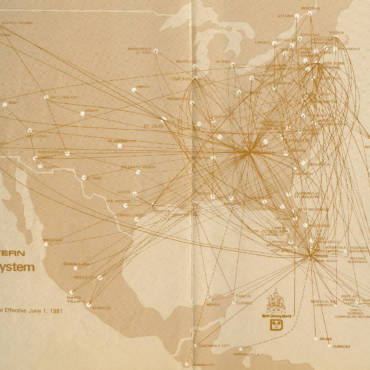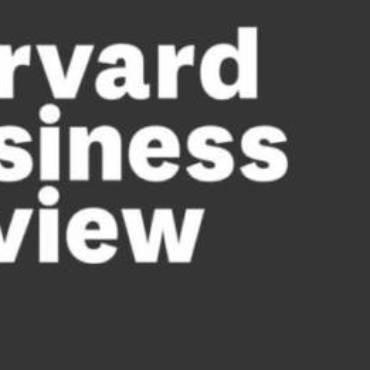Last month, I shared my initial reflections on the demise of the once-proud Eastern Air Lines, whose last day of operation was 30 years ago as the first Gulf War (US-led coalition in response to Saddam Hussein’s invasion of Kuwait in August 1990) began.
Using the frame of the Fortune Most Admired Companies ranking to chronicle the tumultuous final decade of Eastern left this “airline brat” whose parents spent a half-century at Eastern during its golden age with a bad taste in my mouth. Bad people management gives too much of a pass to labor union heads like the IAM’s Charlie Bryan for their role in the Greek tragedy, while misuse of Eastern’s corporate assets by Texas Air makes Eastern’s management seem like passive victims, which they were most certainly not.
When you foul up people management, use of corporate assets and financial soundness as EAL did pretty spectacularly on its own and then as part of Texas Air during the 1980s, it’s damn near impossible to earn enough trust, admiration and goodwill to stay afloat.
It might be more illuminating to use a different reputational framework to play back the last years of Eastern’s life as a going concern in order to more accurately diagnose the multiple causes of reputational decline. The RepTrak framework was created by Dr. Charles Fombrun and Cees Van Riel in the 2000s using the Reputation Quotient (RQ) model that Fombrun architected a decade earlier. (I worked for Reputation Institute from 2010-16 before it changed its name to The RepTrak Company in 2020). Using the standard RepTrak model with the four emotional components of reputation (Pulse) and seven rational dimensions of reputation, you can see how more clearly how Eastern’s post-deregulation life can be split into the Borman era (1978-85) and the Lorenzo ending (1986-91).
The Borman era: Frank Borman left NASA and joined Eastern during the Watergate years of the early 1970s, and became CEO in 1975 while the airline industry was still regulated. During his 11 years running EAL, Borman was well-known and liked by policy-makers and regulators inside the Beltway and by the financial community on Wall Street. In many ways, he was one part John Glenn (fellow NASA legend who made a successful 2nd career by reveling in “The Right Stuff” adulation politically) and one part Lee Iacocca (the charismatic Chrysler CEO who brought the car maker out of bankruptcy in the 1980s and became one of the first “celebrity CEOs” to appear in advertising campaigns). However, Eastern’s history of labor/management strife dating back to the Captain Eddie Rickenbacker era was alive and well in the newly deregulated times of the 1980s, and Borman was never able to completely win over the rank and file machinists and flight attendants (spending more time and effort courting the pilots, as he shared their career path and military background).
- Strong reputation under Borman: Innovation (adapting quickly to preserve market share on its lucrative East Coast Shuttle flights, and adopting the first employee stock ownership plan in the industry) and Leadership (owing primarily to Borman’s appealing astronaut fame and his clear vision of the Big Four airline’s deregulated future with a more fuel-efficient fleet of Boeing 757s and Airbus A-300s for the 1980s and beyond).
- Average reputation under Borman: Citizenship (deregulation meant reduced profits and enhanced competition, so any CSR under Borman was more accidental than purpose-driven), Performance (EAL had some of its best years as well as some of its worst under Borman, but the same was true for TWA, United and American over the same period. Delta’s balance sheet was in a class by itself in terms of the industry incumbents), Governance (the enhanced openness and transparency of launching the ESOP plan in 1983 was somewhat negated by labor pulling the rug out from under Borman only 2 years later and forcing him out when Lorenzo and Texas Air swooped in to purchase the airline) and Products & Services (from 1978 onward, it was all about “peanuts fares” and a series of moves to try and fill airplanes with millions of new travelers, so EAL was partially successful on its New York to Florida routes, but its Atlanta hub suffered at the hands of hometown Delta’s efficiency and effectiveness).
- Weak reputation under Borman: Workplace (to be fair, most of the Big Four moved faster than EAL in adopting a two-track employment system with their unions, especially in the wake of President Reagan’s move to break the air traffic controller strike in 1981. As a result, Eastern’s IAM union struck a war footing to avoid that fate and eventually poisoned the well with the more moderate flight attendants and generally pro-management pilots to the point that even after 2 years of labor peace thanks to the ESOP, all 3 unions decided life under a new owner (Texas Air) would be better than continuing on with Borman, who had run out of patience and financial runway by 1986.
The Lorenzo end: If Frank Borman was one part John Glenn and another part Lee Iacocca, then it can be said the archetypes most often used to frame Frank Lorenzo would be his investment buddy Michael Milken or a character from Mario Puzo’s Godfather series. Lorenzo had spent his entire 20 year career in the airline industry, but in the relative obscurity of running tiny Texas International during the 1970s far away from Borman’s TV commercials or appearances at Disney World (EAL was the official airline of the Magic Kingdom in Orlando for the first 20 years of its life). When Lorenzo used Milken and Drexel Burnham’s leveraged approach to pluck much larger mid-tier Continental Airlines from financial difficulty in 1981, Borman and the other Big Four chieftains like AMR’s Bob Crandall or United’s Richard Ferris saw Lorenzo as more of an irritant than a trend-setter. Once Lorenzo declared bankruptcy and reorganized Continental, bringing its costs way down below 50% of the Big Four by 1983, the “corporate raider” approach had Wall Street’s undivided attention (remember, this was in the run-up to Oliver Stone’s 1987 blockbuster movie Wall Street where Michael Douglas won an Oscar for his Gordon Gekko corporate raider character, as well as the largest leveraged buy-out in history – RJR Nabisco – made famous by the classic 1989 Barbarians At The Gate by John Helyar). By the time Lorenzo came calling for EAL at Borman’s request in early 1986, the bridesmaid had become the bride thanks more to financial engineering than airline operational excellence.
- Average reputation under Lorenzo: only Citizenship remained consistent from Borman to Lorenzo, and it was clearly the least important driver of airline industry reputation during the 1980s. Innovation at EAL fell from Strong to Average under Lorenzo, as EAL assets were sold one by one either to the Texas Air parent at questionable, below-market rates, or eventually to competitors ranging from the bluster of Donald Trump’s brief foray into aviation to lucky incumbents like Delta and American.
- Weak reputation under Lorenzo: perceptions of both Performance (reduced profitability, lower growth prospects and worsening quarterly results as Lorenzo’s all-out war on labor costs dragged both EAL and Texas Air’s stock price down) and Products & Services (weak on-time flight performance and US Department of Labor investigation into shoddy maintenance work led to a $9M fine and negative publicity for EAL by 1989) suffered with the flying public as well as regulators, investors and employee morale.
- Poor reputation under Lorenzo: the “unhappy triad” of bottom-of-the-barrel perceptions about Eastern under Lorenzo from a Leadership (a toxic management culture starting with Lorenzo, whom the unions targeted with unflattering media leaks, as well as poor organization and a “shrink to greatness” approach to EAL’s future which inspired exactly no one), Governance (academics and think tanks rallied to support Eastern’s unions in their “David vs. Goliath” struggle against Lorenzo’s bean counters at the holding company level, and the US union movement eulogized the Borman era and compared it favorably to Lorenzo’s reign of terror from an ethics and fairness POV) and Workplace (it became a battle of dueling PR firms and unflattering media coverage of both management and labor as multiple lawsuits and strike threats ruined any chance Eastern had of attracting a new buyer who wasn’t a fellow traveler like Carl Icahn) meant the end of all 40,000 jobs and the 65 year history of a once-great airline by 1991.
In summary, Borman was the perfect swash-buckling CEO for a new airline era of deregulation of the 1980s…if only fuel prices had stayed at pre-deregulation levels (which they did not) and Eastern’s unions had seen the ascendancy of Southwest as a teachable moment to get some religion on the company’s still bloated cost structure on their terms. The worst part of the story is that Borman and the 3 EAL unions were able to collaborate in 1983-84 to have the company’s best years ever in terms of multiple KPIs. Once the contracts were re-opened in 1985 and the economics of the incumbent carriers dictated a different approach (due to United’s crippling 30 day strike over a two-tier B scale to match AMR’s that Crandall had introduced after Lorenzo’s Continental takeover), neither Borman nor the unions were able to seize the moment, and that allowed Lorenzo to walk in the side door, and the rest is “lose/lose” history.




